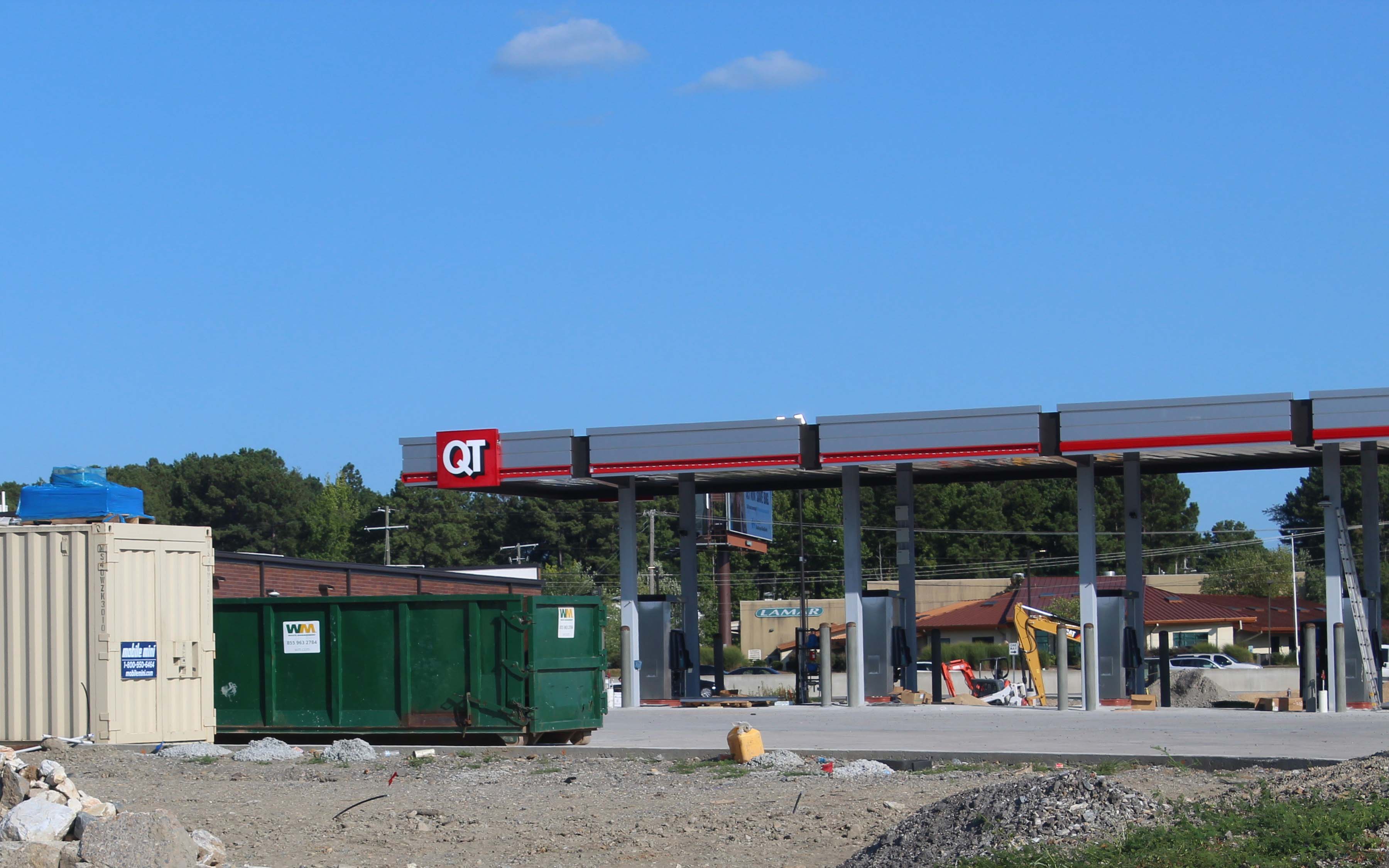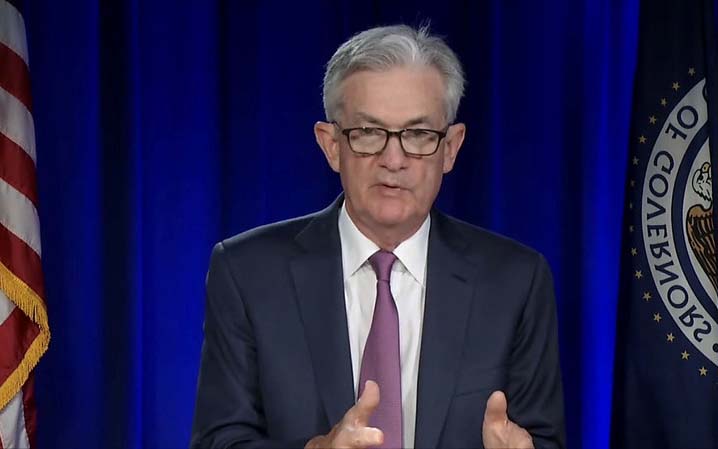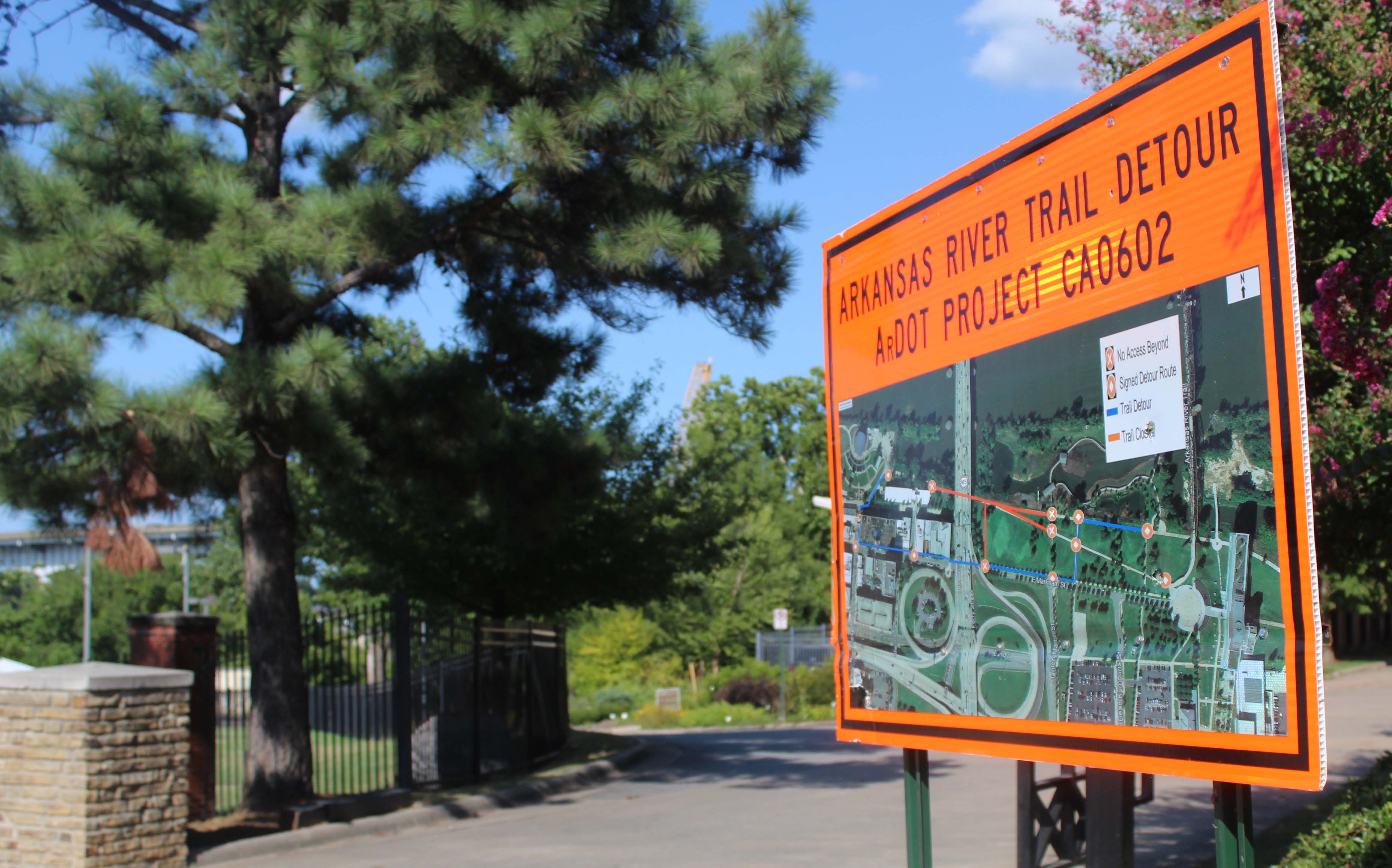Arkansas, U.S. economic recovery stunted by COVID-19 concerns as Delta variant runs rampant
August 16-22, 2021
By Wesley Brown
While Arkansas and the rest of the nation have not fully recovered from the largest downturn since the Great Depression, key economic reports in the past few weeks show the U.S. economy is trending in the right direction amid concerns about the spread of the Delta variant of the COVID-19 virus.
Chief among those reports is the July 29 release of the “advance” second quarter real gross domestic product (GDP) report from the U.S. Bureau of Economic Analysis (BEA) showing that the U.S. economy expanded at an annual rate of 6.5%. That report, BEA officials said, reflected “the continued economic recovery, reopening of establishments, and continued government response related to the COVID-19 pandemic.”
The nation’s bellwether economic report - which measures the value of goods and services produced by the nation’s economy less the value of the goods and services used in production — came just a day after the July 28 meeting of the Federal Reserve’s Open Market Committee (FOMC). In that meeting, Federal Reserve Chairman Jerome Powell said with progress on vaccinations and strong policy support from the Biden administration, key indicators of economic activity and employment have continued to strengthen.
“The path of the economy continues to depend on the course of the virus. Progress on vaccinations will likely continue to reduce the effects of the public health crisis on the economy, but risks to the economic outlook remain,” Powell said in a statement.
The “advance” GDP reading is based on incomplete source data that is subject to revisions by the BEA, which is the economic research arm for the U.S. Department of Commerce. The “second” estimate for the second quarter, based on more complete data, will be released Aug. 26. The BEA also releases a third final GDP reading each quarter that provides the keenest snapshot of the world’s largest economy.
Overall, BEA data shows second quarter currentdollar GDP increased 13% at an annual rate, or $684.4 billion, to a level of $22.72 trillion. In the first quarter, current-dollar GDP spiked 10.9%, or $560.6 billion. Current-dollar personal income, however, fell by 22% to $1.32 trillion in the second quarter compared to a 56.8% or $2.33 trillion gain in the first quarter.
The decrease in personal income primarily reflected a steep decline in government social benefits related to pandemic relief programs, BEA officials said, notably the end of direct economic impact payments to households established by the CARES Act and the American Rescue Plan. Under those two COVID-19 emergency programs signed into law by former President Donald Trump and current President Joe Biden, Congress approved two separate COVID-19 stimulus packages, each with a price tag of $2.2 trillion.
The BEA’s second quarter data also shows that disposable personal income decreased by $1.32 trillion, or 26.1%, in the second quarter, compared with an increase of $2.27 trillion, or 63.7%, in the first three months of 2021. Personal savings was $1.97 trillion in the second quarter, compared with $4.07 trillion in the first quarter. The personal saving rate – personal saving as a percentage of disposable personal income – was 10.9% in the third quarter, compared with 20.8% percent in the second quarter.
Despite the steady expansion, the quarterly economic report fell short of Wall Street expectations of 8.5% GDP growth for the three-month period ended June 30. The influential Conference Board said continuous improvements in COVID-19 vaccination rates have stalled as the Delta variant became the dominant strain in the U.S. in July. Still, economic momentum in the second half of 2021 is forecasted to stay strong through the rest of the year.
“Real GDP should grow by 7.8% in the third quarter. However, concerns about inflation are growing. While prices should continue to rise throughout 2021, we do not anticipate run-away inflation,” said Erik Lundh, principal economist for the Wall Street economic think tank. “Further upside for economic growth is possible from 2022 onward if an infrastructure package is passed and implemented.”
Fed holds firm on interest rate hikes through 2022
With economic growth now on a solid path, other key pillars of the U.S. recovery also caught the attention of key central bankers, monetary policymakers, and economists that sit on the influential FOMC panel. In a recent Aug. 4 speech to the Peterson Institute for International Economics in Washington, D.C., the Federal Reserve Vice Chair Richard Clarida cited three specific conditions regarding GDP growth, unemployment and inflation that need to be met for the committee to consider raising the target interest rate for the federal funds from zero to 25 basis points.
On GDP growth, Clarida said data from the late July release of the Commerce Department’s economic analysis group report shows the U.S. economy has “transitioned from economic recovery to economic expansion” in the second quarter.
“Given the catastrophic collapse in U.S. economic activity in the first half of 2020 as a result of the global pandemic and the mitigation efforts put in place to contain it, few forecasters could have expected—or even dared to hope—in the spring of last year that the recovery in GDP, from the sharpest decline in activity since the Great Depression, would be either so robust or as rapid,” said Clarida, who was appointed to the Fed’s second-in-command position by former President Donald Trump in 2018.
A Columbia University economist, Clarida is one of the seven Board of Governors who oversee the Federal Reserve system, which includes 12 districts equally divided across the U.S. The FOMC consists of twelve members, including seven Fed governors; the president of the Federal Reserve Bank of New York; and four of the remaining eleven district presidents, who serve one-year terms on a rotating basis.
And while Fed Chair Powell has stated that the FOMC’s goal for a full recovery is to achieve maximum employment and inflation at the rate of 2% over the long-term, Clarida said both those measures have not been reached yet.
In the most recent U.S. unemployment report on Aug. 6, the U.S. Labor Department’s Bureau of Labor Statistics (BLS) reported that total nonfarm payroll employment rose by 943,000 in July, and the nation’s jobless rate fell 0.5 percentage point to 5.4%. By comparison, Arkansas’ unemployment rate has held at 4.4% for the third straight month with very little job growth. Before the pandemic, the U.S. and Arkansas jobless rate were both at near all-time lows of 3.5%.
“While, as Chair Powell indicated last week, we are clearly a ways away from considering raising interest rates and this is certainly not something on the radar screen right now,” said Clarida. “(I)f the outlook for inflation and outlook for unemployment I summarized earlier turn out to be the actual outcomes for inflation and unemployment realized over the forecast horizon, then I believe that these three necessary conditions for raising the target range for the federal funds rate will have been met by year-end 2022.”
Clarida also noted that in past analysis of U.S. business cycles show, the recovery in employment has always lagged the recovery in GDP, “and this cycle is no exception,” he said.
“Indeed, at the end of the second quarter of this year, even though the level of real GDP was 0.8% above the level reached at the previous business cycle peak, the level of employment as measured by the household survey remained about 7 million below the level reached at the previous business cycle peak,” said the Fed vice chair. “So, while it is accurate to say we are in the expansion phase of the cycle in terms of economic activity, we remain in the recovery phase of the cycle in terms of aggregate employment.”
Concerning inflation, Clarida said current Fed forecasts show that core Personal Consumption Expenditures (PCE) will surge to at least 3% in 2021 before moderating to 2.1% for the next two years. On Aug. 11, Clarida’s prediction seemed to be coming true after BLS released its widely watched Consumer Price Index (CPI). That report showed inflation had increased only 0.5% in July after rising 0.9% in the previous month.
Over the last 12 months, the CPI’s “all items” index has spiked 5.4% for the year with the indexes for shelter, food, energy, and new vehicles all increasing through July. The food index increased 0.7% in July as five of the major grocery store food group indexes rose, and the “food away from home” index increased 0.8%. The energy index also rose 1.6% in July, as the gasoline index increased 2.4% and other energy component indexes saw price increases.
Clarida said the baseline outlook for inflation over the three-year projection window reflects the judgment, shared by many outside economists, that most of the “inflation overshoot relative to the longer-run goal of 2% will prove to be temporary.”
“But, as I have noted before, there is no doubt that it is taking longer to fully reopen a $20 trillion economy than it did to shut it down,” Clarida said of runaway inflation concerns. “Although in a number of sectors of the economy the imbalances between demand and supply—including labor supply—are substantial, I do continue to judge that these imbalances are likely to dissipate over time as the labor market and global supply chains eventually adjust and, importantly, do so without putting persistent upward pressure on price inflation, wage gains adjusted for productivity, and the 2% longer-run inflation objective.”
In addressing economic views that the Fed will need to raise interest rates to control rising inflation, Clarida said Fed monetary policy has remained the same since late 2020 after a majority of the FOMC voted to keep interest rates near zero through 2023 as part of a long-term, accommodative strategy. The committee first cut the U.S. federal funds rate from 0.25 to zero percent during an emergency Sunday meeting on March 15, 2020, four days after global COVID-19 pandemic began.
“The FOMC introduced—and since then has, at each subsequent meeting, reaffirmed—outcome-based, threshold guidance that specifies three conditions that the (FOMC) expects will be met before it considers increasing the target range for the federal funds rate, currently 0 to 25 basis points.
“While, as Chair Powell indicated last week, we are clearly a ways away from considering raising interest rates and this is certainly not something on the radar screen right now, if the outlook for inflation and outlook for unemployment I summarized earlier turn out to be the actual outcomes for inflation and unemployment realized over the forecast horizon, then I believe that these three necessary conditions for raising the target range for the federal funds rate will have been met by year-end 2022,” concluded the New York economist.
At the Fed’s July 28 meeting, all FOMC members voted unanimously to reaffirm that accommodative stance. The committee has three additional meetings in 2021 to review, affirm or change that policy.
Arkansas economic outlook
Closer to home, On July 9, the BEA published state-level estimates of GDP growth for the first quarter of 2021 with all 50 states showing sizable growth. Annualized rates ranged from 4.5% in Texas to 10.9% in Nevada. Arkansas’ growth rate for the quarter was 6.9%, slightly higher than the nationwide average of 6.4%.
Like the national economic outlook, however, other business-related economy surveys show that Arkansas’ economy is also rebounding but still faces some challenges ahead, especially with rising inflation and difficulty in the job market. For example, the NFIB Small Business Optimism Index fell to 99.7, reversing June’s 2.9-point gain. Six of the 10 components declined, three improved, and one was unchanged. The NFIB Uncertainty Index also decreased seven points to 76, indicating business owners’ are less optimistic than in earlier months.
“Small business owners are losing confidence in the strength of the economy and expect a slowdown in job creation,” said NFIB Chief Economist Bill Dunkelberg. “As owners look for qualified workers, they are also reporting that supply chain disruptions are having an impact on their businesses. Ultimately, owners could sell more if they could acquire more supplies and inventories from their supply chains.”
NFIB does not produce Arkansas-specific data for its monthly survey, but NFIB State Director Sylvester Smith noted that the “labor shortage and inconsistent supply chain are making things difficult for Arkansas’ small businesses, but owners are determined to get through this.”
Separately, the July Creighton University Mid-America Business Conditions Index, a leading economic indicator for the nine-state region stretching from Minnesota to Arkansas, dipped to a still strong 73.1 from June’s 73.5. However, as in previous months, between 80% and 90% of manufacturing supply managers’ report that labor shortages and supply bottlenecks continue to restrain growth.
“(Our) monthly survey results indicate the region is adding manufacturing business activity at a very healthy pace, and that regional growth will remain strong. Absent supply bottlenecks and labor shortages, that growth would be even stronger,” said economist Ernie Goss, director of Creighton University’s Economic Forecasting Group.
PHOTO CAPTIONS: (Photos by The Daily Record Staff)
1. Privately-held Quiktrip of Tulsa, which has nearly 900 convenience store locations in eleven states, is building a new superstore at the intersection of Bass Pro Parkway and Otter Creek Road, near I-30 and the Outlet Mall of Little Rock.
2. Federal Reserve Chair Jerome Powell recently said the FOMC will likely hold off raising interest rates until late 2022, or early 2023.
3. Despite the spread of the COVID-10 Delta variant in Arkansas, the state's GDP growth jumped to 6.7% in the first quarter as commercial and industrial construction projects continue across the state.





